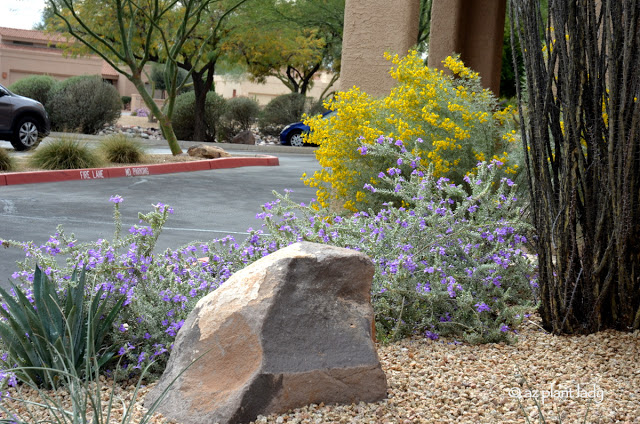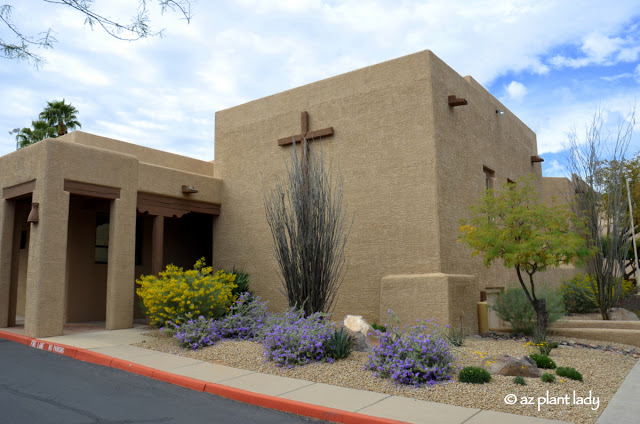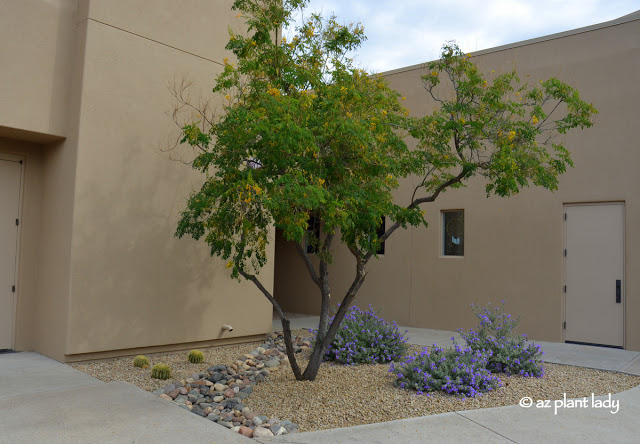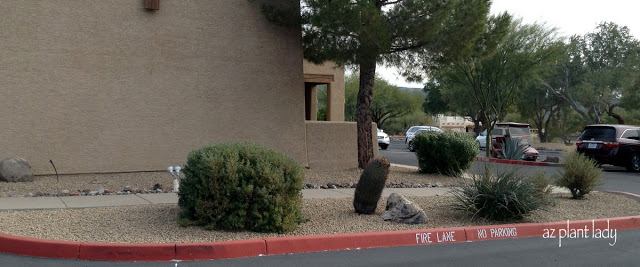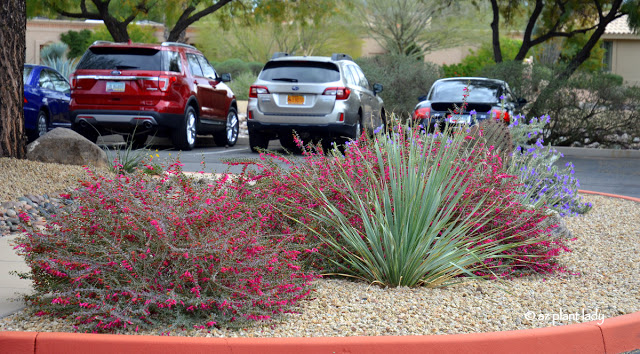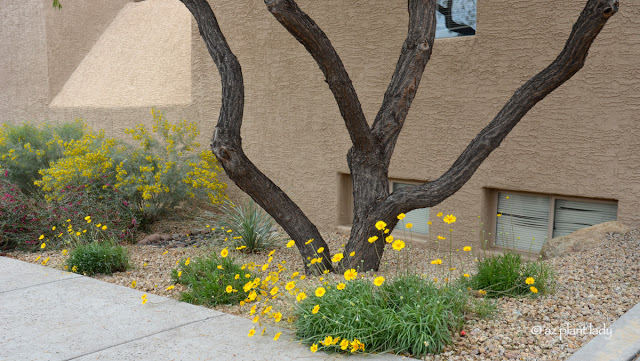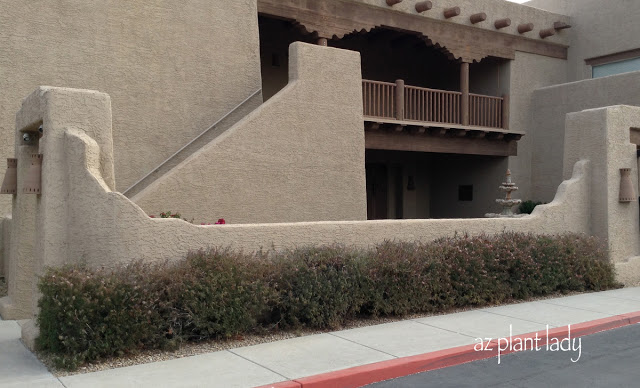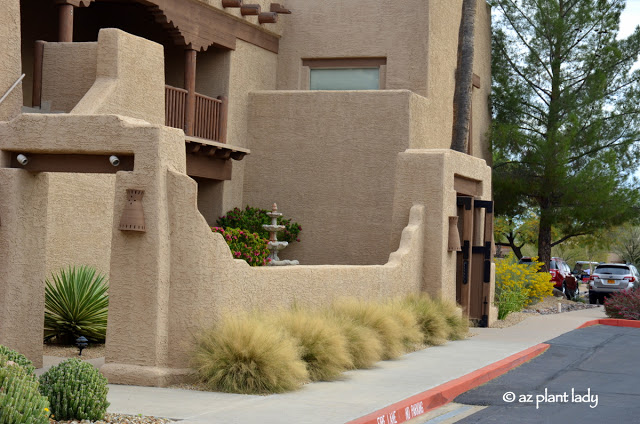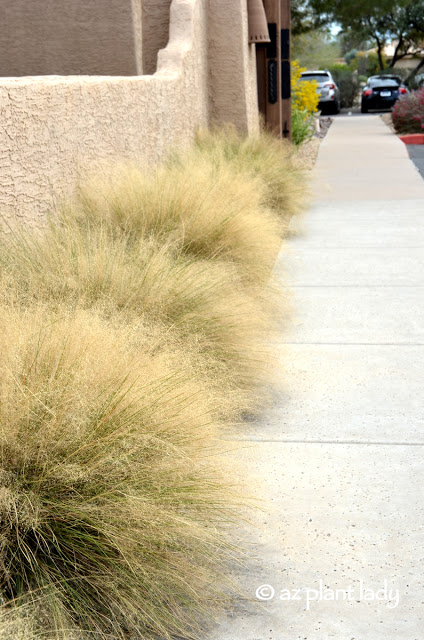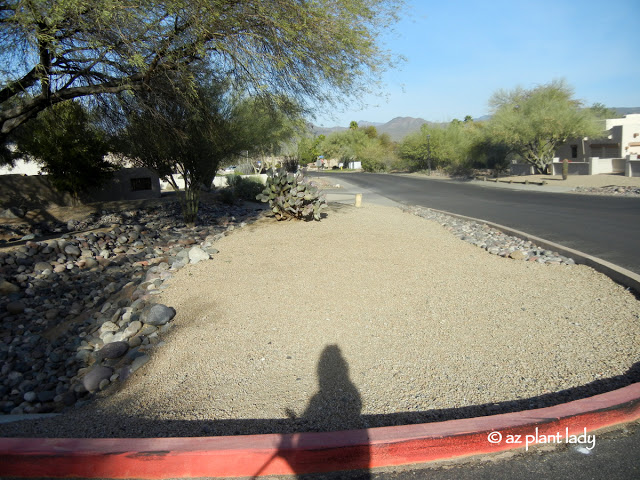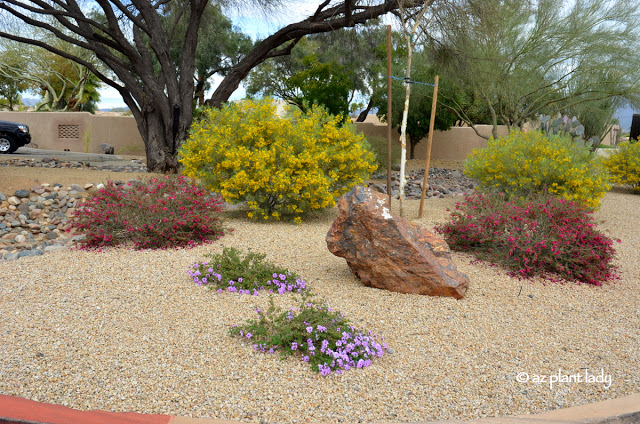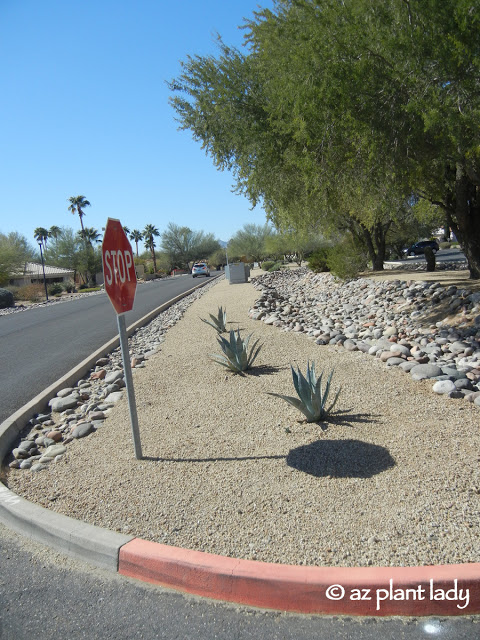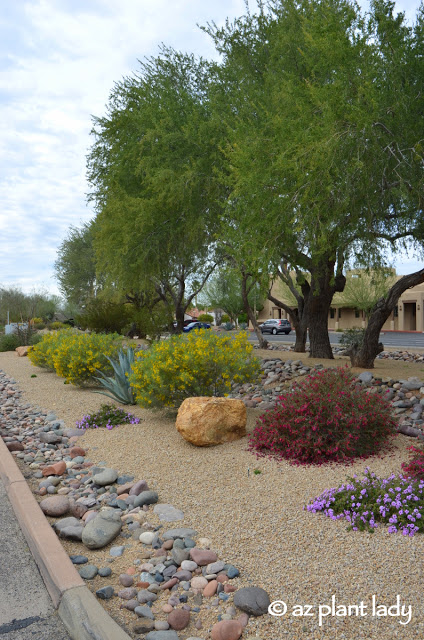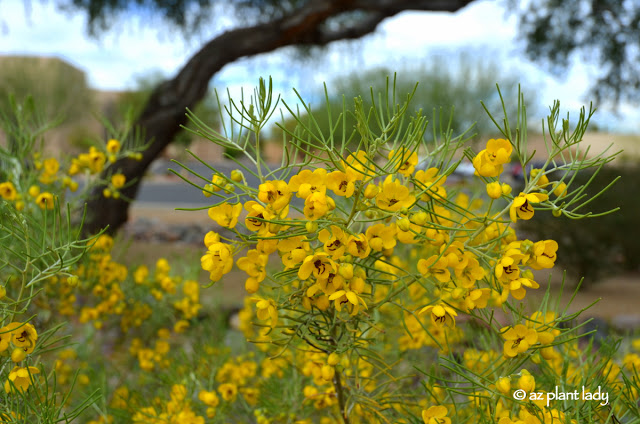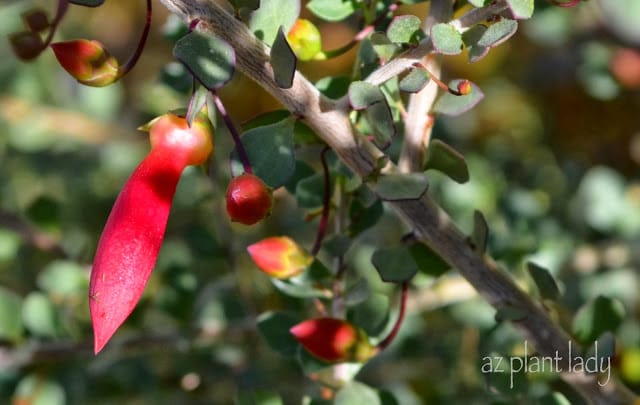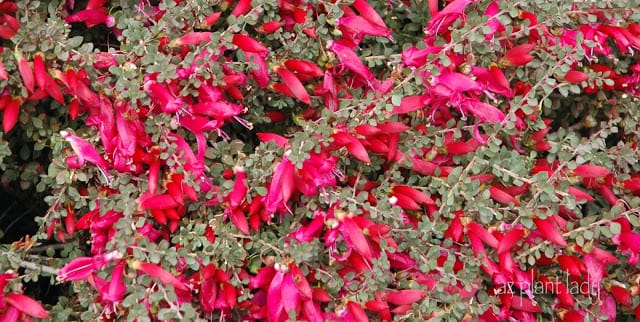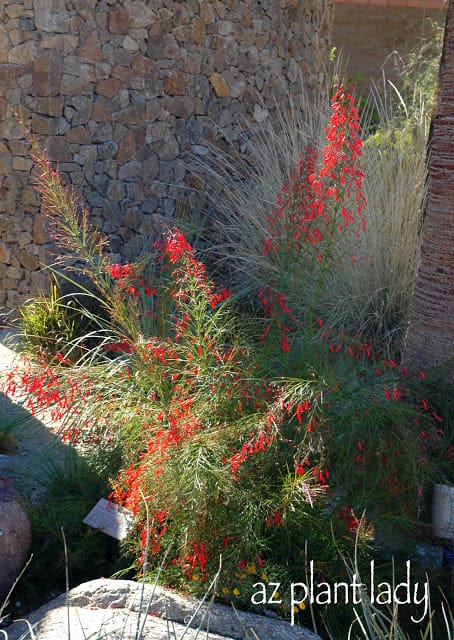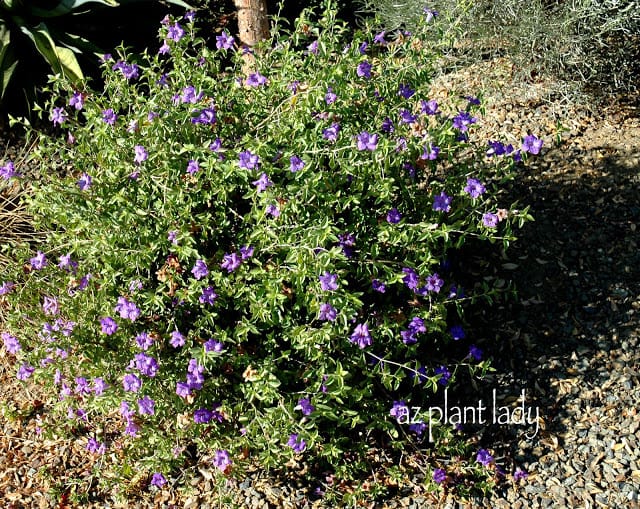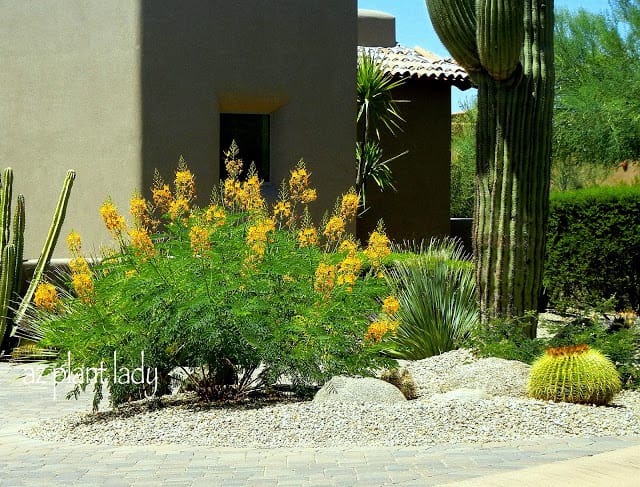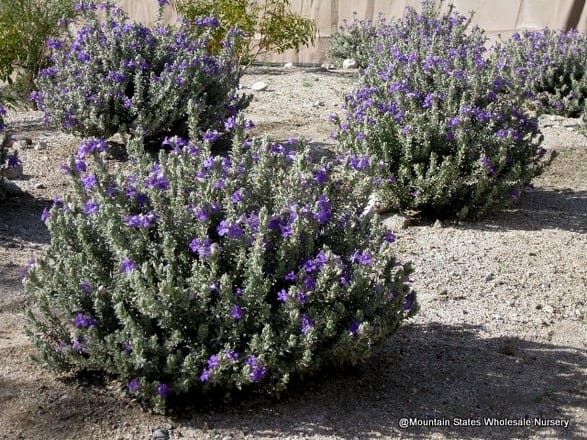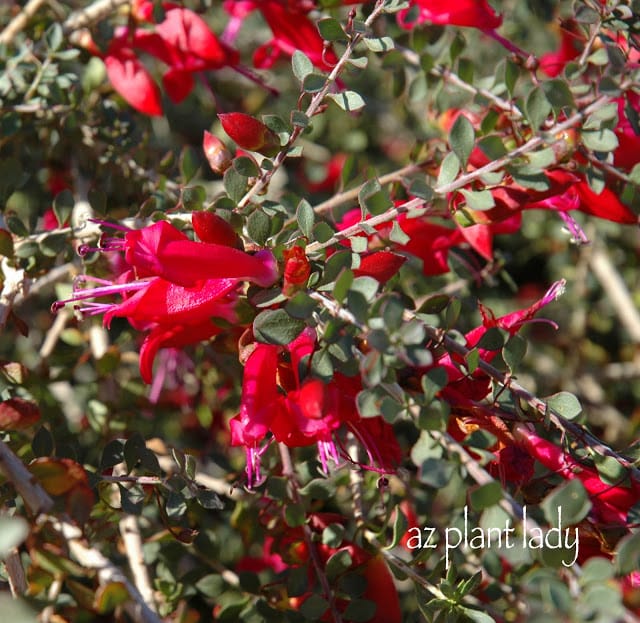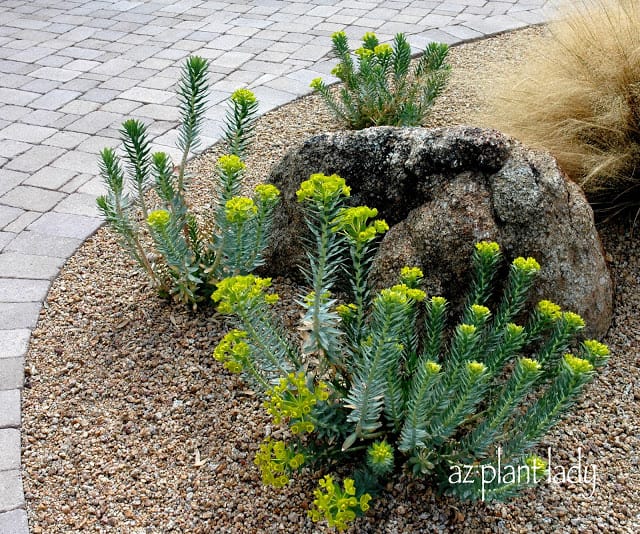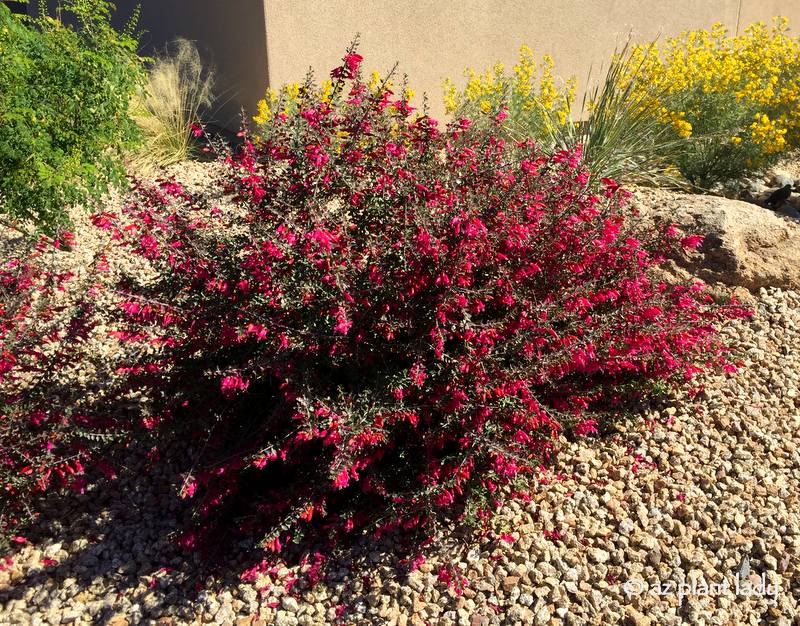
Valentine Bush (Eremophila maculata ‘Valentine’)
The Vibrant Beauty of Valentine Bush
A Colorful Gem for Your Landscape
How would you like gorgeous red, tubular flowers blooming at Christmas time and lasting past Valentine’s Day, all packaged up in an attractive, low-maintenance shrub? Believe it or not, such a shrub exists. Let me introduce you to Valentine Bush (Eremophila maculata ‘Valentine’).
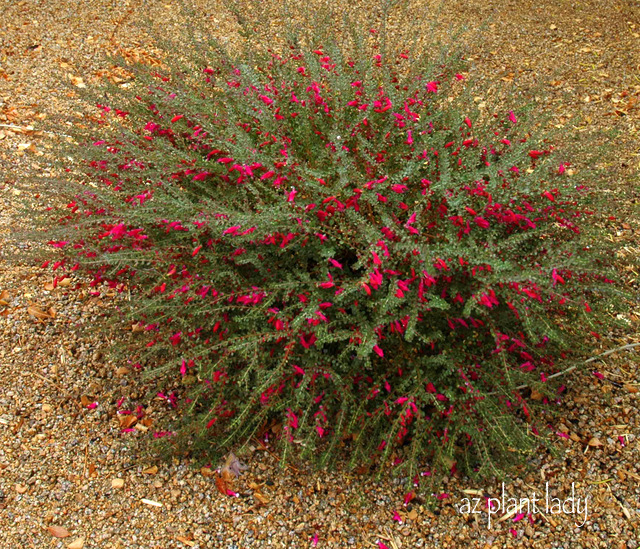
A Promising Valentine Bush Introduction
My first experience with this colorful shrub occurred in 2000 when I was offered two free Valentine shrubs to test out on the golf course where I was working. Never one to pass up free plants, I was more than happy to try these new shrubs out.
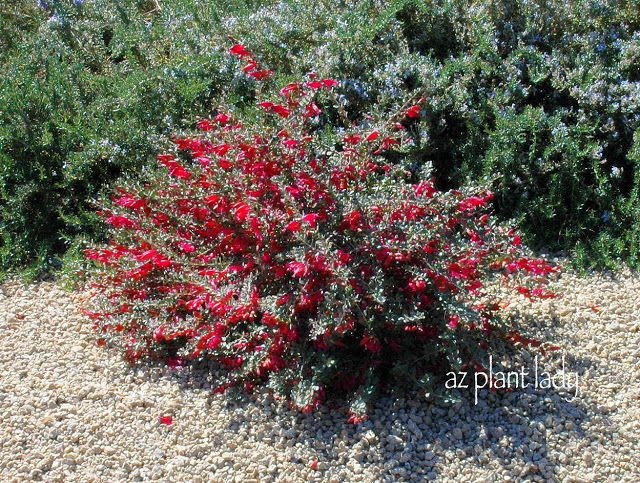
Young Valentine, six months after planting, next to Trailing Rosemary.
Flourishing Garden Shrub Beauty
Those new shrubs did so well that a couple of years later, I had planted over fifty of them planted all around the golf course. I love their cool-season blooms, which add a welcome splash of color when many plants aren’t blooming, and the dark green foliage continues to add beauty to the landscape even when their flowers fade.
Nowadays, you will find Valentine in both commercial and residential landscapes. An interesting fact that many may not know is that many of the arid-adapted plants that thrive here are native to Australia, including the species Eremophila.
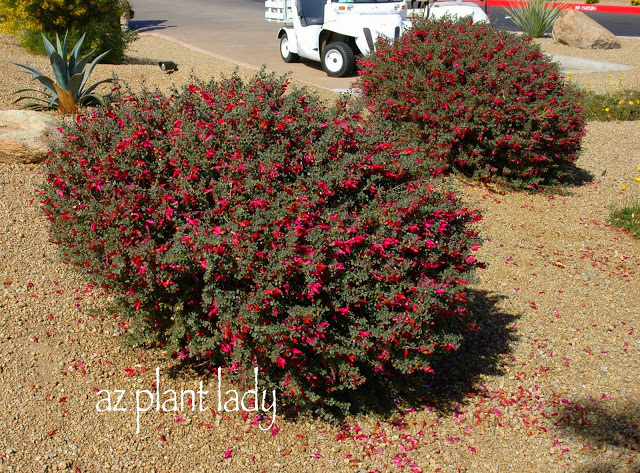
Landscaping with Valentine Bush
Valentine provides much need color in the landscape during the winter months and will bloom through early spring. Red is often a color missing in the desert plant color palette that this shrub provides. Valentine grows at a moderate rate and will reach a mature size of 3-4 feet high and 4 feet wide.
I pair it with groundcovers such as blackfoot daisy (Melampodium leucanthum) or trailing rosemary (Rosmarinus officinalis), and perennials such as Parry’s penstemon (Penstemon parryi) and desert marigold (Baileya multiradiata).
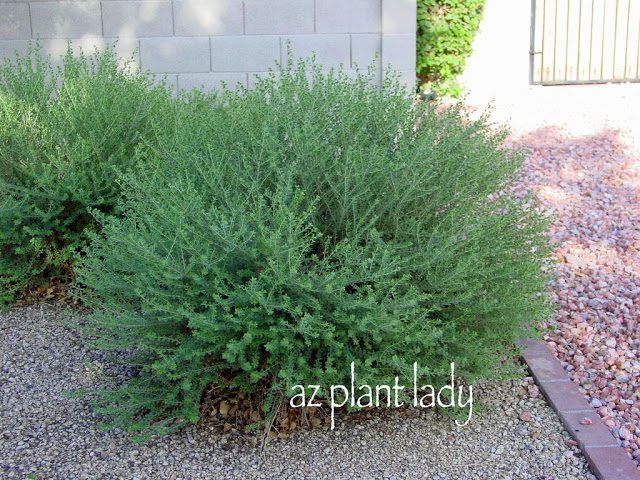
Valentine when not in flower.
A Shrub that Has Year-Round Attractiveness
When not in flower, Valentine is still very attractive and is hardy to 15 degrees F. It does best when planted in full and reflected in the sun. Their leaves turn maroon at the tips during the winter adding some fall color to the landscape.
Caring for Valentine Bush with Proper Maintenance
Valentine does best with regular irrigation and soils with good drainage. If planted in areas with wetter soils, let the soil dry out between watering to prevent root rot.
You will probably not believe this, especially coming from me – the person who rants and raves about beautiful shrubs that have been incorrectly pruned by being sheared, but here it is: Valentine shrubs should be sheared. That’s right, I said they should be shared.
Believe it or not, there are some types of shrubs where shearing is the best way to prune them, and this is true for Valentine. They should be pruned ONCE a year, once they have finished blooming in the spring. DO NOT prune later in the year as this will remove the branches that will produce the flowers later in the year.
The Perfect Shrub for the Desert Southwest
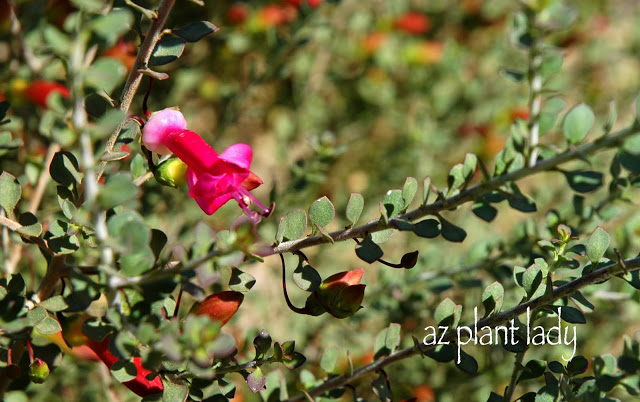
Here is the first bloom of this season on my Valentine shrub.
Well, would any of you be surprised to know that Valentine is my favorite shrub? I mean, what is there not to love? It has everything – low-maintenance, attractive foliage, thrives in the heat and sun, and most importantly, gorgeous winter color.
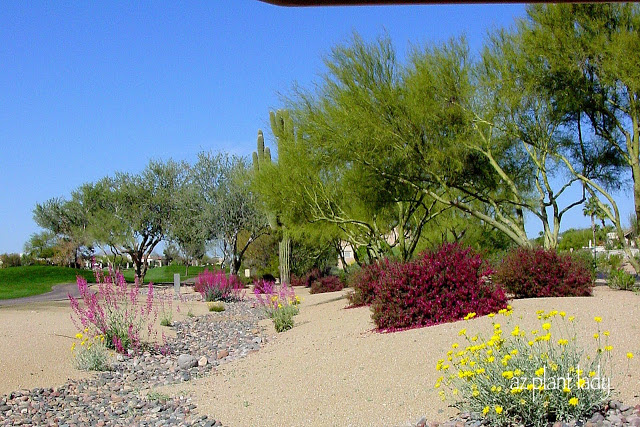
In this landscape area, I designed, you can see Valentine in the background paired with Parry’s Penstemon and Desert Marigold.
So run, don’t walk, and go and add Valentine to your landscape.
A Stroll Through a Flowering Winter’s Garden


